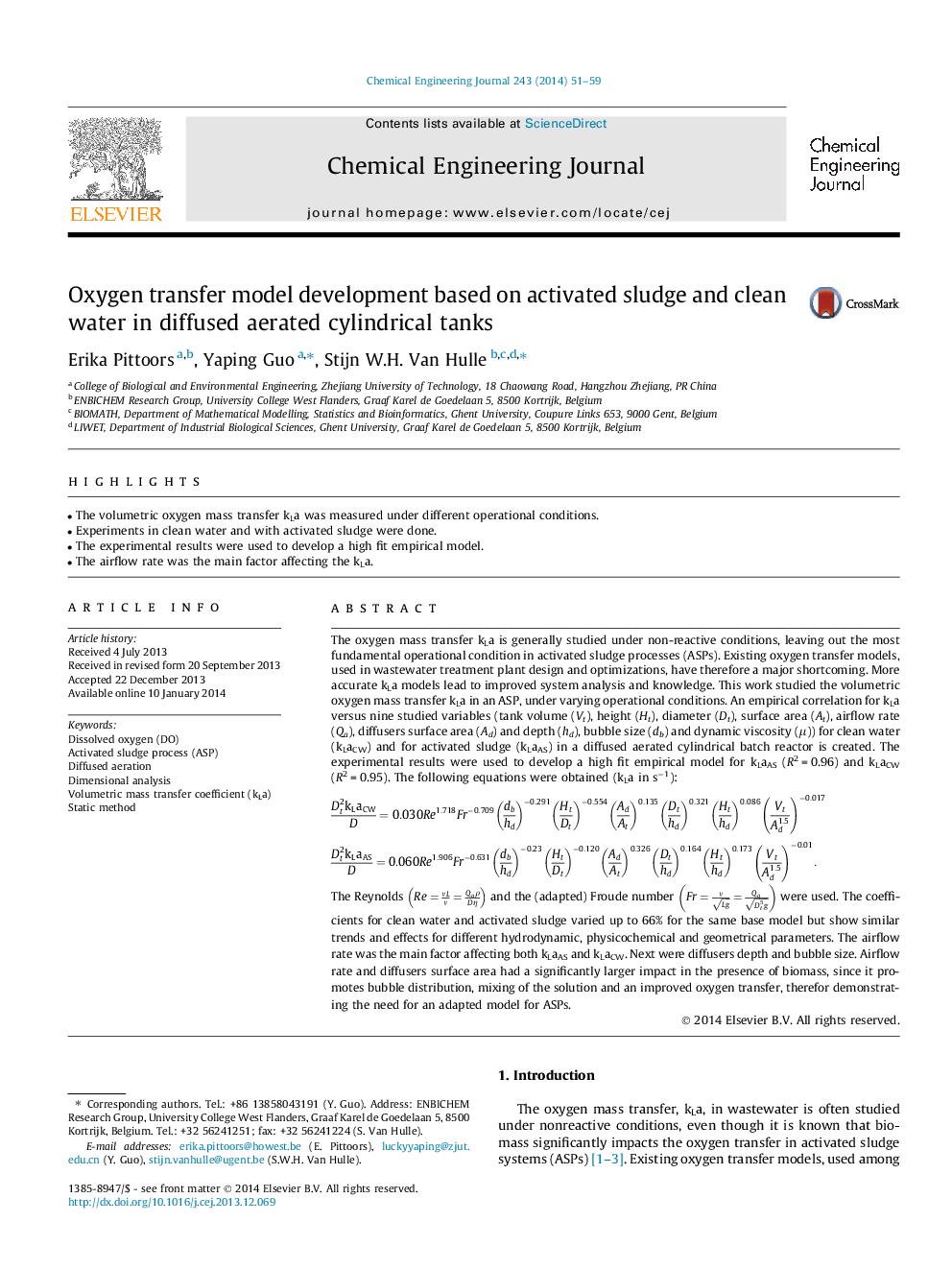| Article ID | Journal | Published Year | Pages | File Type |
|---|---|---|---|---|
| 147862 | Chemical Engineering Journal | 2014 | 9 Pages |
•The volumetric oxygen mass transfer kLa was measured under different operational conditions.•Experiments in clean water and with activated sludge were done.•The experimental results were used to develop a high fit empirical model.•The airflow rate was the main factor affecting the kLa.
The oxygen mass transfer kLa is generally studied under non-reactive conditions, leaving out the most fundamental operational condition in activated sludge processes (ASPs). Existing oxygen transfer models, used in wastewater treatment plant design and optimizations, have therefore a major shortcoming. More accurate kLa models lead to improved system analysis and knowledge. This work studied the volumetric oxygen mass transfer kLa in an ASP, under varying operational conditions. An empirical correlation for kLa versus nine studied variables (tank volume (Vt), height (Ht), diameter (Dt), surface area (At), airflow rate (Qa), diffusers surface area (Ad) and depth (hd), bubble size (db) and dynamic viscosity (μ)) for clean water (kLaCW) and for activated sludge (kLaAS) in a diffused aerated cylindrical batch reactor is created. The experimental results were used to develop a high fit empirical model for kLaAS (R2 = 0.96) and kLaCW (R2 = 0.95). The following equations were obtained (kLa in s−1): Dt2kLaCWD=0.030Re1.718Fr-0.709dbhd-0.291HtDt-0.554AdAt0.135Dthd0.321Hthd0.086VtAd1.5-0.017Dt2kLaASD=0.060Re1.906Fr-0.631dbhd-0.23HtDt-0.120AdAt0.326Dthd0.164Hthd0.173VtAd1.5-0.01.The Reynolds Re=νLν=QaρDη and the (adapted) Froude number Fr=νLg=QaDt5g were used. The coefficients for clean water and activated sludge varied up to 66% for the same base model but show similar trends and effects for different hydrodynamic, physicochemical and geometrical parameters. The airflow rate was the main factor affecting both kLaAS and kLaCW. Next were diffusers depth and bubble size. Airflow rate and diffusers surface area had a significantly larger impact in the presence of biomass, since it promotes bubble distribution, mixing of the solution and an improved oxygen transfer, therefor demonstrating the need for an adapted model for ASPs.
